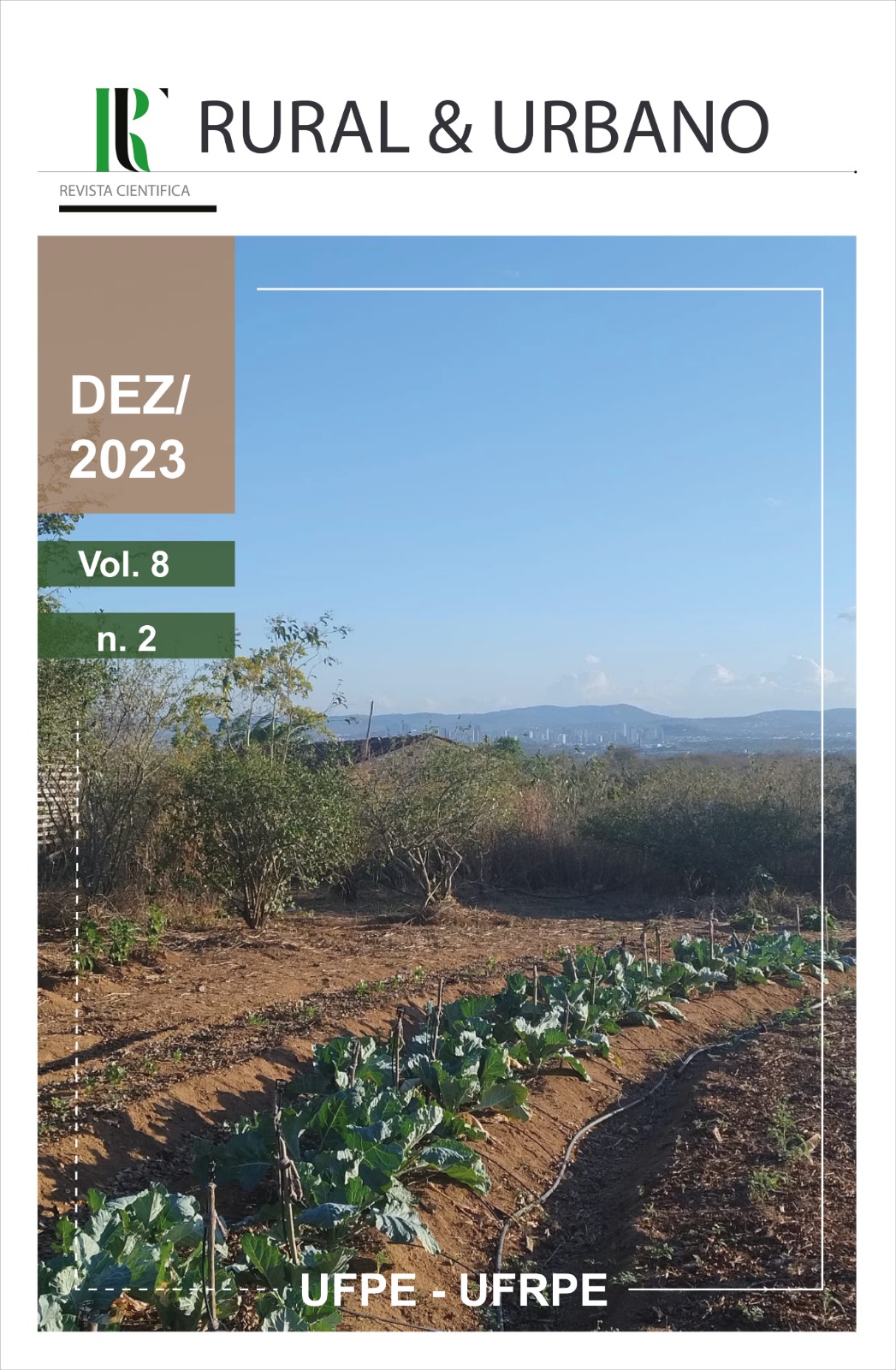Crossroads against the reproduction of peasant culture: Veredas Campo Alegre, El Tesoro, Santa Rosa and La Paz San Francisco, of the corregimiento La Danta in the municipality of Sonsón, Antioquia, Colombia (1990-2019)
DOI:
https://doi.org/10.51359/2525-6092.2023.252754Keywords:
expropriation, peasant population, state, job, capitalAbstract
This article approaches the process of exploitation-expropriation of land from the peasant population, a phenomenon that can be identified as de-peasantization, which has repercussions in the relationship between human beings and the nature, the ownership of land and property and the means of production, altering material conditions that mediate the reproduction of the traditional culture of these populations; It is observed that the normative updates privilege practices with each legitimate transformation into "rights". Which constitute abuses, insofar as they make the right of one of the parties that links the property tension contingent. To understand it, it is necessary to take advantage of the Totality as a category of analysis, identifying the subjects that participate in the socio-spatial context where tensions are expressed due to the privatization of profits, focusing on the resources that make a geostrategic location visible, which calls into question the debate on the development, planning and reproduction of peasant life. The Law abstracts from the need and determinations of historical appropriation by the peasants, while imposing forces that interpret the interests of capital, subordinates the deliberative capacity of the State and exacerbate a prolonged armed conflict.
References
BIBLIOGRAPHY Alcaldía de Sonsón. (2020). PLAN DE DESARROLLO TERRITORIAL JUNTOS CONSTRUYENDO FUTURO 2020-2023. Sonsón.
Alcaldía de Sonsón. (23 de 1 de 2021). www.sonson-antioquia.gov.co. Obtenido de www.sonson-antioquia.gov.co: www.sonson-antioquia.gov.co
Alzate, S. L., & Pazo, F. C. (2020). Pagos por serviciosambientales en el Oriente Antioqueño. Dilemas por la transformación del territorio. Colección Ciencias Sociales, 69-90.
Biocomercio Andino . (20 de noviembre de 2021). biocomercioandino. Obtenido de biocomercioandino: http://www.biocomercioandino.pe/biocomercio-en-per%C3%BA/%C2%BFqu%C3%A9-es-biocomercio.aspx
Centro Nacional de Memoria Histórica. (2018). Tierra Balance de la contribución del CNMH al esclarecimiento histórico. Bogotá.
Centro Nacional de Memoria Hitorica (CNMH); Comisión Nacional de Reparaciones (CNRR); Instituto de Estudios Políticos y Relaciones Internacionales(IEPRI) y Universidad Nacional de Colombia. (2009). El Despojo de Tierras y Territorios. Aproximación conceptual.
Bogotá: Kimpres Ltda.
Congreso de la Republica de Colombia. (1959). LEY 20 DE 1959. Bogotá.
Corporación Autónoma Regional de las Cuencas de los Ríos Negro y Nare-Cornare. (2015). Plan de Crecimiento Verde y Desarrollo Compatible con el Clima para el Oriente .
Corporación Autónoma Regional de las Cuencas de los Ríos Negro y Nare-Cornare. (2019). Acuerdo N° 395. Rionegro.
Departamento Nacional de Planeacciòn. (1990). DECISIONES SOBRE EL PROGRAMA DE APERTURA ECONÓMICA. Bogotá.
Instituto Distrital de Participación y acción comunal (IDPAC). (2 de novienbre de 2021). www.participacionbogota.gov.co. Obtenido de www.participacionbogota.gov.co: https://www.participacionbogota.gov.co/sites/default/files/2020-04/PREGUNTAS%20FRECUENTES%20ORGANIZACIONES%20COMUNALES.pdf
Marx, K. (1981). El Capital. Crítica de la economia política (Primera edición en español ed., Vol. 8). (L. Mames, Trad.) Mexico: Siglo XXI Edictores.
Ministerio de Ambiente y Desarrollo Sostenible . (26 de marzo de 2021). www.minambiente.gov.co. Obtenido de www.minambiente.gov.co: https://www.minambiente.gov.co/gestion-integral-del-recurso-hidrico/planes-de-ordenacion-y-manejo-de-cuencas-hidrograficas-pomca/
Presidencia de la República de Colombia. (30 de diciembre de 1993). Sistema Único de Información Normativa . Obtenido de Sistema Único de Información Normativa : http://www.suin-juriscol.gov.co/viewDocument.asp?id=1483093
PROGRAMA DE LAS NACIONES UNIDAS PARA EL DESARROLLO (PNUD). (2014). El Camino Sembrado. Cronica. Estudio de Caso del Proceso de apropiación y poblamiento de los corregimientos de Aquitania, El Prodigio, San Miguel, Jerusalen y la Danta El Camino en el Oriente de Antioquia. Rionegro.
Restrepo, M. C. (Octubre de 2011). El SISTEMA KARSTICO DE LA DANTA (SONSÓN - ANTIOQUIA) COLOMBIA. Dyna(169), 239-246.
Secretaria de Minas- Gobernación de Antioquia. (2017). MAPA MINERO ANTIOQUIA. Sectorización minera de los municipios 2017. Medellín.
Verdadabierta.com. (11 de noviembre de 2008). La marca de ‘Macguiver’. Recuperado el 23 de julio de 2021, de https://verdadabierta.com/macguiver-el-constructor/
Zapata, D. M., Barrera, M. X., & Naranjo, L. G. (Edits.). (2017). Plan de Crecimiento Verde y Desarrollo Compatible con el Clima en el Oriente antioqueño. Alianza Clima y Desarrollo, Corporación Autónoma Regional de las cuencas de los ríos Negro y Nare, Fundación Natura, WWF. Cali.
Downloads
Published
How to Cite
Issue
Section
License
Copyright (c) 2023 Patricia Naranjo Cañas

This work is licensed under a Creative Commons Attribution-NonCommercial-ShareAlike 4.0 International License.
Autores que publicam nesta revista concordam com os seguintes termos:
a) Autores mantém os direitos autorais e concedem à revista o direito de primeira publicação, com o trabalho simultaneamente licenciado sob a Creative Commons Atribuição-Não Comercial-Compartilha Igual 4.0 Internacional  , que permite o compartilhamento do trabalho com reconhecimento da autoria e publicação inicial nesta revista.
, que permite o compartilhamento do trabalho com reconhecimento da autoria e publicação inicial nesta revista.
b) Autores têm autorização para assumir contratos adicionais separadamente, para distribuição não-exclusiva da versão do trabalho publicada nesta revista (ex.: publicar em repositório institucional ou como capítulo de livro), com reconhecimento de autoria e publicação inicial nesta revista.
c) Autores têm permissão e são estimulados a publicar e distribuir seu trabalho online (ex.: em repositórios institucionais ou na sua página pessoal) a qualquer ponto antes ou durante o processo editorial, já que isso pode gerar alterações produtivas, bem como aumentar o impacto e a citação do trabalho publicado.

